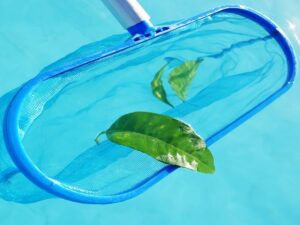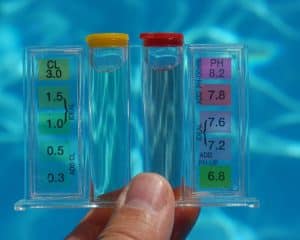The Importance of Balancing Pool Water Chemistry
Proper pool water chemistry is essential for a clean, safe, enjoyable swimming experience. Balancing the chemicals in your pool ensures that the water remains clear, free from bacteria and algae, and gentle on the skin and eyes of swimmers. Understanding pool water chemistry and regularly testing and adjusting the chemical levels are crucial aspects of pool maintenance.
What should my pool water chemistry be?
To achieve optimal pool water chemistry, you need to consider several key elements:
- pH Levels: The pH scale measures the acidity or alkalinity of the water. The ideal pH range for pool water is between 7.2 and 7.6. Maintaining the correct pH level helps prevent eye and skin irritation, protects pool equipment, and ensures the effectiveness of other chemicals.
- Total Alkalinity: Total alkalinity acts as a buffer, stabilizing the pH level and preventing rapid fluctuations. The recommended range for total alkalinity is typically between 80 and 120 parts per million (ppm).
- Chlorine Levels: Chlorine is a strong sanitizer that protects the water from harmful bacteria and algae. The ideal chlorine range is between 1 and 3 ppm for residential pools. However, following manufacturer guidelines and adjusting chlorine levels accordingly is essential.
What is the most crucial element in swimming pool water chemistry?
While all elements of pool water chemistry are essential, pH is often considered the most critical factor. pH levels directly affect the effectiveness of chlorine and other chemicals, as well as the comfort of swimmers. Imbalanced pH can lead to issues such as eye and skin irritation, cloudy water, and equipment damage.
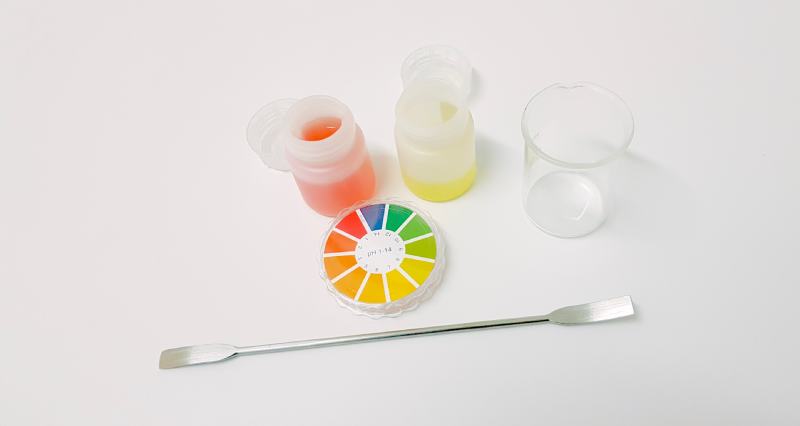
How do I balance my pool water chemistry?
Balancing pool water chemistry involves regular testing, adjustments, and appropriate chemicals. Here are the critical steps to maintaining balanced water chemistry:
- To learn more about pool water chemistry balancing, visit: Finn’s Pool Services. Test the water regularly: Use test kits or electronic testers to measure pH, total alkalinity, and chlorine levels. Test kits are available at pool supply stores or can be performed by professional pool service companies like Finn’s Pool Services. Discover the clarity of our website, where we elucidate these steps with ease. Trust us with this process and explore how effortlessly we make it for you.
- Adjust pH: If the pH is too high (above 7.6), add a pH reducer like muriatic acid to bring it down. If the pH is too low (below 7.2), add a pH increaser like soda ash or sodium bicarbonate to raise it.
- Stabilize alkalinity: If the total alkalinity is too low, an alkalinity increase can be used to raise it. If alkalinity is too high, muriatic or dry acid can lower it.
- Maintain chlorine levels: Regularly check chlorine levels and adjust as needed. This can be done by adding chlorine tablets, liquid chlorine, or shock treatments to the pool water.
- Monitor and adjust other chemicals: Cyanuric acid (also known as a stabilizer or conditioner) can be added to protect chlorine from degradation caused by sunlight. Additionally, depending on your specific pool’s needs, regular testing and adjustment of calcium hardness, phosphates, and metals may be necessary.
Achieving the Perfect Pool Water Chemistry: Key Elements and Measurements
What is ppm in pool water?
PPM stands for “parts per million” and is a measurement unit that expresses a substance’s concentration in pool water. It indicates the number of specific chemical units per one million water units. For example, a chlorine level of 3 ppm means there are three parts of chlorine per million parts of water. PPM is commonly used to measure various chemicals in pool water, including chlorine, pH, alkalinity, calcium hardness, and cyanuric acid.
What does pH in a pool do?
pH plays a crucial role in pool water chemistry. It affects the efficiency of chlorine, the comfort of swimmers, and the overall water balance. When the pH is too high, chlorine becomes less effective in sanitizing the water, leading to potential algae growth and reduced clarity. On the other hand, if the pH is too low, the acidic water can cause corrosion of pool equipment and irritation to swimmers’ eyes and skin.
Does a higher pH indicate increased alkalinity?
No, pH and alkalinity are two measurements that characterize pool water chemistry. While they share some relationships, each measures different aspects. While both measure acidity or alkalinity of water, alkalinity refers to how well it resists changes in pH levels; changes in alkalinity levels can impact pH levels; however, high levels may contribute to higher ones without correlating directly.
Does chlorine raise or lower pH levels in pool water?
Chlorine can influence pH levels significantly when added to the pool water. By nature, calcium hypochlorite and sodium hypochlorite compounds contain natural alkalis like calcium hypochlorite, which increase pH when added, leading to a rise in pH when introduced as the pool adds chlorine. For optimal water chemistry and balance, regular pH tests and adjustments must be carried out to maintain adequate chlorine and pH levels for proper chemical balance within pool water chemistry.

What happens if the pH and alkalinity levels in my pool are elevated?
An imbalance between pH and alkalinity levels may lead to various issues in the water, including cloudiness or reduced chlorine effectiveness in sanitizing it. High pH and alkalinity can also contribute to scale formation on surfaces and equipment, making cleaning harder and potentially causing damage over time. Thus, high pH/alkalinity levels must be addressed using appropriate chemicals so they return within their recommended limits.
What Happens if Pool pH Is Too High?
A high pool pH can create various problems. First and foremost, chlorine becomes less effective at sanitizing the water, leading to algae growth and decreased clarity. High pH levels may also cause scaling on surfaces, equipment, and plumbing, requiring extra cleaning/maintenance efforts and discomfort for swimmers due to eye or skin irritation. Therefore, pH levels must fall within their recommended range for healthy and balanced pool environments.
Is Pool Chlorine Acidic Or Basic?
Pool chlorine is a base, not an acid. Chlorine compounds like calcium hypochlorite and sodium hypochlorite contain alkaline elements that, when dissolved into water, release hydroxide ions characteristic of floors. However, when added to pool water, the pH level can change due to alkaline compounds found within.
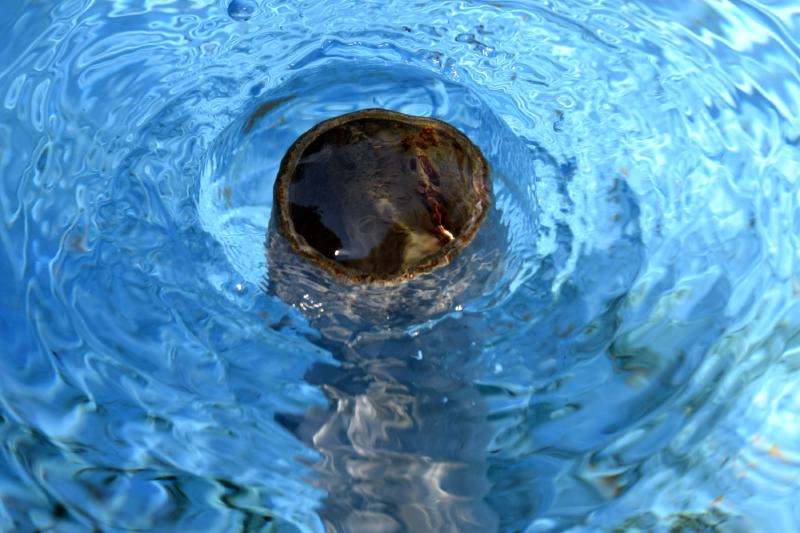
What happens if the pH levels in my pool drop too low?
A pool that falls into this acidic category becomes acidic, leading to corrosion of metal surfaces, etching of plaster surfaces, damage to pool equipment, and skin and eye irritation for swimmers.
Furthermore, low pH levels reduce chlorine’s effectiveness at sanitizing and keeping bacteria and algae at bay from spreading into the water, and cloudiness or dull appearance can result. To maintain a healthy swimming environment, pH levels must reach within their recommended range – otherwise, serious issues arise that need addressing.
What pH Should Pool Water Be?
The ideal range for pool water pH should fall between 7.2 and 7.6, providing optimal conditions for chlorine to sanitize while protecting swimmers effectively. Testing and adjusting pH as necessary is vital in maintaining balanced pool chemistry.
Optimizing Pool Water Chemistry: Tips and Best Practices
Want to know how to balance my pH and alkalinity in my pool? To achieve that goal, follow these steps:

Test the Water: To do this accurately and reliably, use an accurate pH/TA test kit on the sample water in your pool to check its acidity and total alkalinity levels.
Adjust Total Alkalinity First: If total alkalinity falls outside the recommended range, first address this. Either add an alkalinity increase if levels are low or use a pH reducer to bring them down if levels are high.
Adjust pH: Once total alkalinity has been balanced, shift your attention towards adjusting pH levels. Use a pH increaser if pH levels are too low or a pH reducer to bring down pH if levels are too high; always follow the manufacturer’s instructions and make gradual adjustments as instructed.
Retest and repeat as necessary: After making adjustments, retest the water to ensure both pH and alkalinity are within their target ranges. If necessary, repeat this process until a balance has been reached.
What makes pool water essential?
Pool water can become basic (having a high pH) due to various factors, including the addition of alkaline substances, such as certain pool chemicals, concrete dust, or high-alkalinity water sources. Additionally, inadequate circulation and aeration can contribute to rising pH levels. Regularly monitoring the pH and taking appropriate measures to maintain the balance is essential.
What affects pool water?
Several factors can affect pool water chemistry, including:
- Environmental factors: Sunlight, rainwater, wind-blown debris, and organic matter brought into the pool by swimmers can impact water chemistry.
- Swimmers: Swimmers introduce contaminants, such as sweat, body oils, and personal care products, which can affect chlorine levels and pH.
- Chemical additions: The type and quantity of pool chemicals added, such as chlorine, pH adjusters, and algaecides, can impact water chemistry.
- Pool equipment and materials: The type of pool surface, filtration system, and circulation patterns can influence water chemistry.
Regular testing, proper filtration, regular cleaning, and pool equipment maintenance are essential for optimal water chemistry.
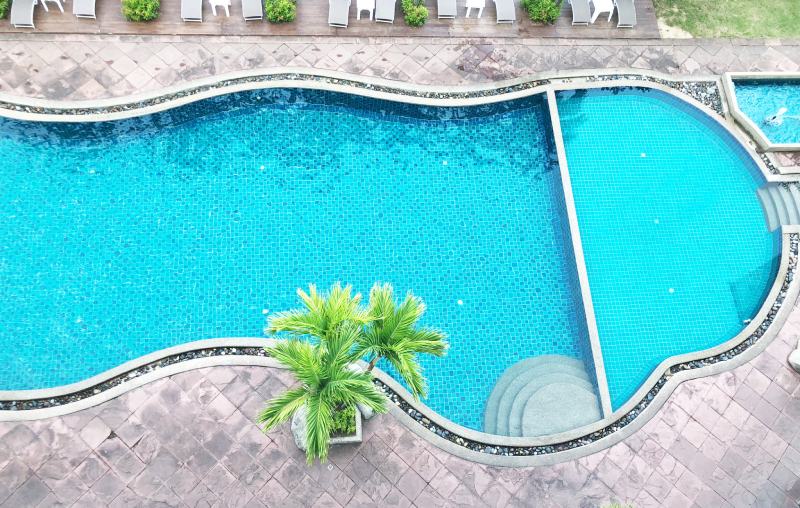
What causes high pH in the pool?
Several factors can contribute to high pH levels in the pool:
- Excessive use of alkaline chemicals: Overusing chemicals like alkalinity increasers or incorrect dosing can lead to high pH levels.
- High alkalinity in the water source: If the source water has naturally high alkalinity, it can result in elevated pH levels in the pool.
- Lack of aeration and circulation: Inadequate water circulation and limited exposure to air can cause carbon dioxide to build up, leading to increased pH levels.
- Presence of debris or organic matter: Decomposing organic matter, such as leaves or algae, can increase pH levels over time.
What causes high alkalinity in the pool?
Several factors can contribute to high alkalinity levels in the pool:
- High alkalinity in the water source: If the source water has naturally high alkalinity, it can result in elevated levels in the pool. Testing the water source before filling the pool can help determine its alkalinity.
- Overuse of alkalinity increases: Adding alkalinity increases excessively or without proper measurement can cause alkalinity levels to rise.
- Baking soda or soda ash: These substances are commonly used to raise alkalinity levels in the pool. Adding them in excess or without proper measurement can lead to high alkalinity.
- Environmental factors: Dust, debris, and organic matter that enter the pool can contribute to high alkalinity levels over time.
To address high alkalinity in the pool, consider the following steps:
- Test the water: Use a pool water testing kit to measure the total alkalinity levels in the pool.
- Determine the required adjustment: Depending on the test results, you may need to lower the alkalinity levels.
- Use muriatic acid or dry acid: These chemicals can lower alkalinity. Follow the manufacturer’s instructions and add the substances gradually.
- Circulate the water: Run the pool pump and filter system for several hours to distribute the chemicals and promote thorough mixing.
- Retest and repeat if necessary: After making adjustments, retest the alkalinity levels to ensure they are within the recommended range. If needed, repeat the process until the desired alkalinity balance is achieved.
It’s important to note that maintaining proper alkalinity levels is crucial for overall water balance and the effectiveness of other chemicals. Regular monitoring and adjustments are necessary to keep the pool water chemistry in optimal condition.

Can you swim with high alkalinity and pH?
Swimming in a pool with high alkalinity and pH levels is generally safe but may cause discomfort for swimmers. High alkalinity can make the water feel “hard” or difficult to maintain proper water balance. High pH levels can lead to eye and skin irritation and affect chlorine’s effectiveness in sanitizing the water.
However, addressing high alkalinity and pH levels is vital to maintain a balanced and enjoyable swimming experience. Regularly test and adjust the pool water chemistry to ensure that alkalinity and pH levels are within the recommended range. This will help create a comfortable and safe environment for swimmers while preserving the longevity of pool surfaces and equipment.
Understanding pool water chemistry and balancing chemicals is crucial for maintaining a clean, safe, and enjoyable swimming pool. Regularly testing and adjusting pH, alkalinity, and other vital elements ensure optimal water chemistry and provide a pleasant swimming experience for yourself, your family, and your guests. If you require assistance or further guidance in maintaining your pool’s water chemistry, consider consulting a professional pool service provider like Finn’s Pool Services.

